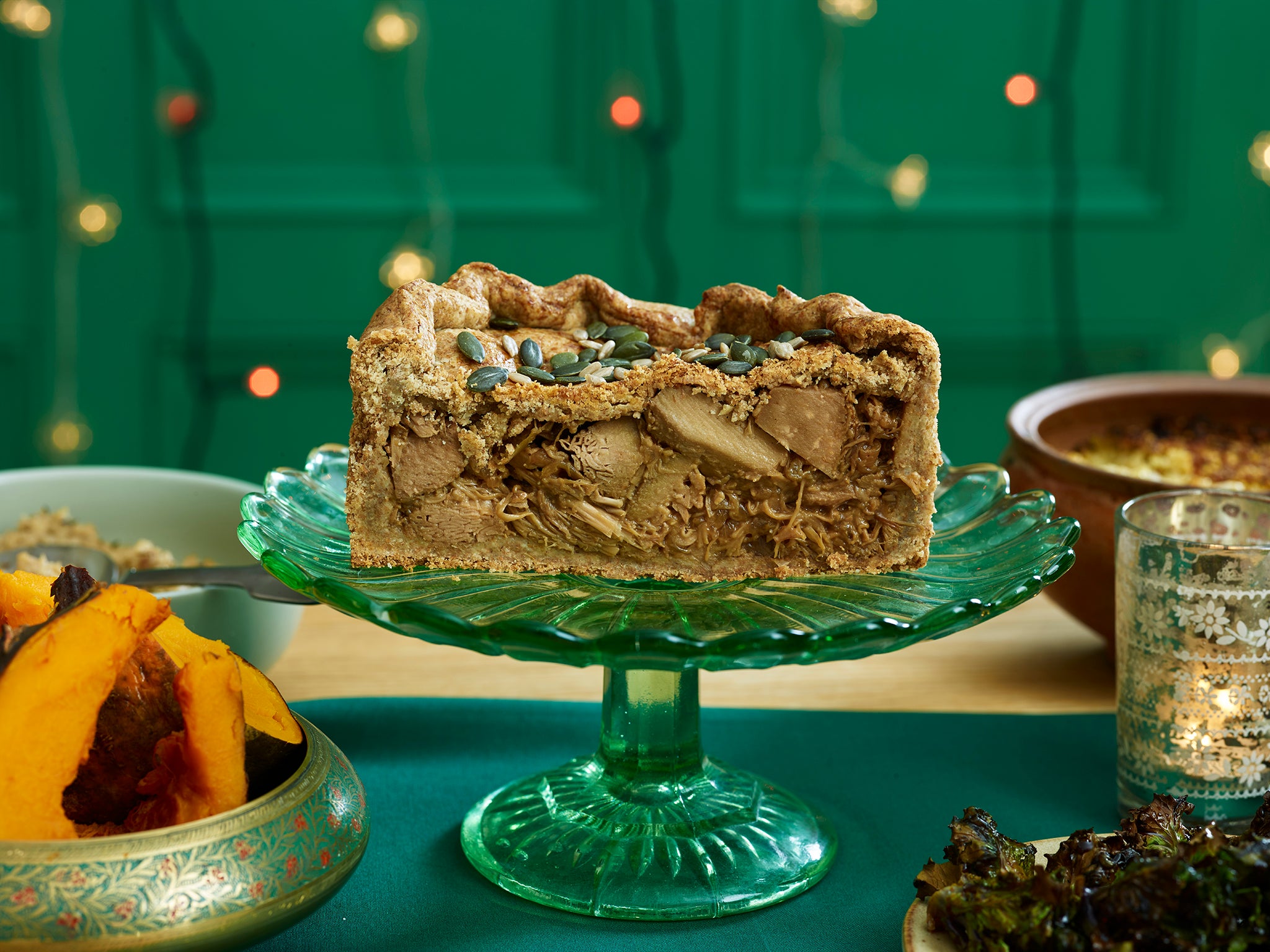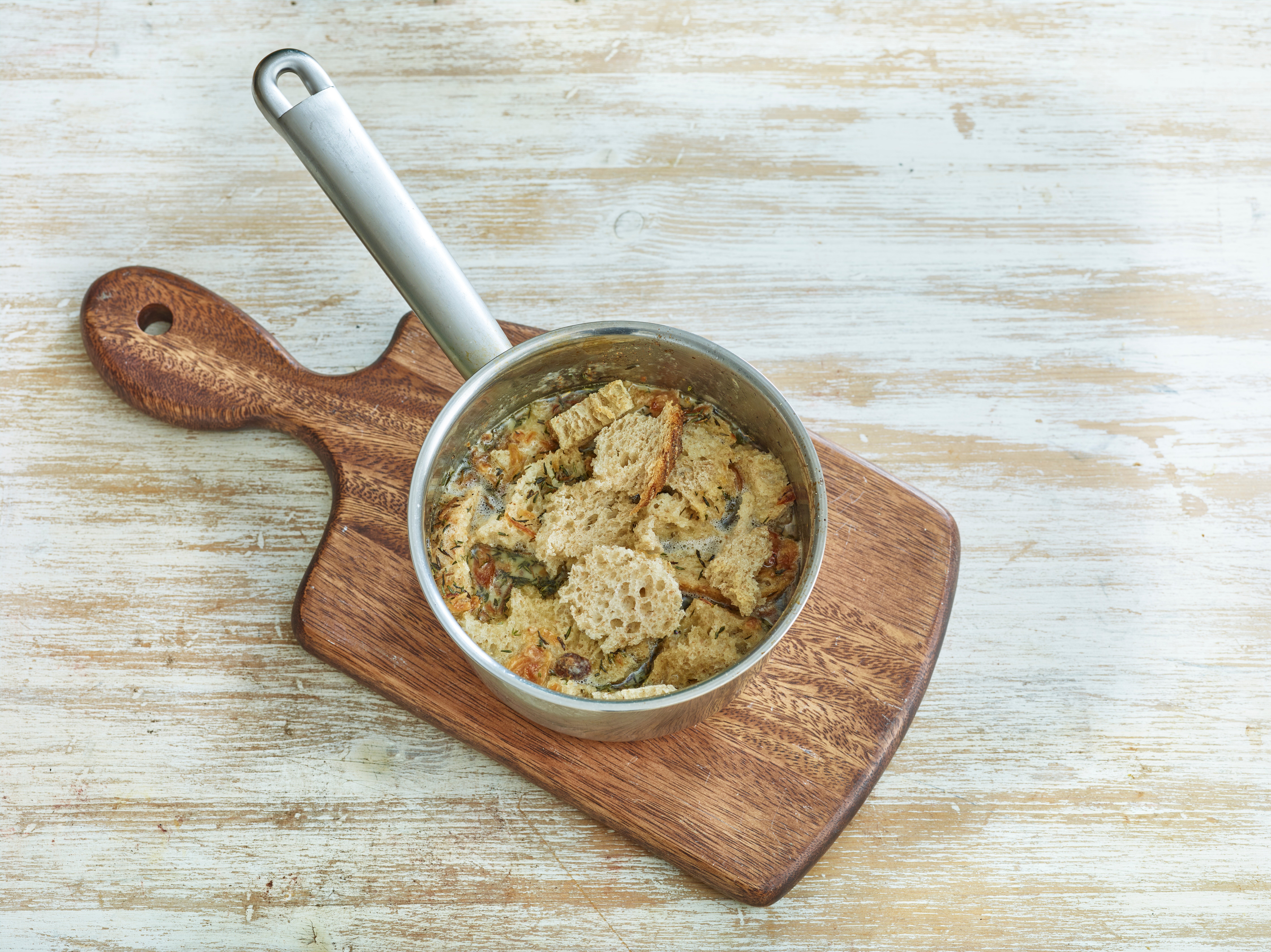A climate-friendly Christmas dinner menu
From a miso and jackfruit pie to confit garlic dahlia root, Kimberley Duke reimagines the traditional Christmas dinner... that we could be eating in 50 years’ time

Your support helps us to tell the story
From reproductive rights to climate change to Big Tech, The Independent is on the ground when the story is developing. Whether it's investigating the financials of Elon Musk's pro-Trump PAC or producing our latest documentary, 'The A Word', which shines a light on the American women fighting for reproductive rights, we know how important it is to parse out the facts from the messaging.
At such a critical moment in US history, we need reporters on the ground. Your donation allows us to keep sending journalists to speak to both sides of the story.
The Independent is trusted by Americans across the entire political spectrum. And unlike many other quality news outlets, we choose not to lock Americans out of our reporting and analysis with paywalls. We believe quality journalism should be available to everyone, paid for by those who can afford it.
Your support makes all the difference.Climate change and a burgeoning global population are threatening the future of the traditional British Christmas dinner, impacting both the availability and quality of key ingredients and their affordability.
This means that in 50 years’ time, almost every element of our favourite festive feast could like quite different.
The soaring cost of turkey and other meat and poultry – as well as the animal feed required to farm them – could see it replaced with alternative proteins like tofu, jackfruit or seitan.
Roast potatoes and Brussels sprouts, which are both highly susceptible to changing temperatures and rainfall, could be phased out in favour of dahlia tubers, from the flowers you may already have in your garden, or Kalettes, a hardier kale-sprout hybrid, respectively.
We may also need to consider switching to grain and wheat alternatives such as amaranth, fonio or sorghum, which are extremely resilient and can be grown cheaply in the harshest of environments.
A new report examining how our diets may need to evolve in the face of these challenges by Diffusion, a communications agency focused on transforming the future, shows that the British public is prepared to accept a new Christmas dinner.
Kimberley Duke, a chef and food writer, has already done the hard work for you with her take on menu for a climate change-resistent Christmas dinner.
Miso pulled jackfruit “turkey” pie
Ingredients:
140g cold water
400g wholemeal buckwheat flour
250g salted vegan butter (or dairy butter), cubed
1 large onion, finely sliced
250g enoki mushrooms
300g tinned jackfruit, drained and rinsed with cold water
½ tsp white pepper
2 tbsp dried garlic
2 tbsp red miso
2 tbsp red wine vinegar (cider vinegar would also work)
1 tbsp coconut blossom syrup (palm sugar syrup or maple syrup would also work well)
150ml water
Method:
For the filling:
1. In a large-lidded frying pan, add the onions with 3 tablespoons of neutral oil of your choice along and a generous pinch of salt, put the lid on and allow to sweat down for 15 minutes on a low heat.
2. Remove the lid and turn the heat up to high, stirring occasionally. Fry the onions for 10 minutes until they begin to brown and caramelise, then add the vinegar and allow to reduce.
3. Add in the enoki mushrooms, jackfruit, white pepper and garlic, and fry for a further 5 minutes.
4. Add in the miso and mix well. Add the water and cook down on a low heat for 10 minutes until everything is sticky and coated.
5. Turn off the heat, mix in the coconut syrup and allow to cool. The mix should be completely cool before adding to the pie crust.
For the pastry:
1. Place the flour and cubed butter into a large mixing bowl and rub together to create a breadcrumb-like texture. The butter doesn’t have to be fully broken down but try not to leave too many big chunks.
2. Add in the water and mix well with your hands for 2-3 minutes. The dough should be soft and pliable.
3. Take a large sheet of baking paper, place the dough in the middle and press into a square. Wrap the pastry in the baking paper and place in the fridge for at least 1 hour, or overnight.
To assemble the pie:
1. Grease an 8-inch pie ring and line with baking paper on the bottom and sides.
2. Split the pastry into two, then on a very lightly oiled bench/counter, roll out the pastry and then cut out a 10-inch-diameter circle for the base and another for the lid and set aside.
3. Place the base into the pie ring, then roll out the second piece of pastry and cut into a strip that will fit around the sides.
4. Line the ring with the pastry, and add in the cooled miso jackfruit filling.
5. Place the lid onto the pie. Crimp the edges and place into the preheated 180C oven for 50 minutes, until the top is golden and crispy.
6. After 50 mins, remove the pie and lightly brush with the coconut blossom syrup using a pastry brush and sprinkle with seeds of your choice.
7. Place back into the oven for a further 10 minutes until the pastry is golden and glazed.
Ancient grain and rosemary and apple stuffing

Ingredients:
1 large onion, thinly sliced
2 tbsp coconut oil or neutral oil of your choice
1 tbsp dried fried garlic
1 tsp of dried thyme
1 tsp dried rosemary
1 tsp dried marjoram
1 apple, peeled and diced
3 large medjool dates, diced
150g amaranth
150g bulgur wheat
400ml water
Method:
1. Preheat oven to 180C.
2. In a large saucepan, add in the sliced onion, along with the oil and stir to combine. Add a generous pinch of salt, then place the lid on and sweat the onions for 15 minutes on a low heat.
3. Remove the lid and cook the onions for a further 5 minutes on a high heat until lightly caramelised.
4. Add in the garlic, thyme, rosemary, marjoram, apple and dates and fry for 1 minute to activate the herbs.
5. Add in the amaranth, bulgur wheat and water, then transfer everything to an oven proof dish, cover with foil and place in the oven to bake for 35 minutes.
6. When the time is up, remove the foil and bake for a further 10 minutes for a crunchy top. Serve topped with crispy fried shallots and chopped parsley.
Spelt sourdough bread sauce

Ingredients:
100g spelt sourdough bread
1 small onion, finely chopped
½ tsp dried thyme
1 bay leaf
350ml oat milk
Pinch of salt
Pinch of pepper
¼ tsp of nutmeg
Method:
1. Preheat the oven to 180C.
2. Place the bread on a large lined baking tray and cook in a hot oven for 6-10 minutes until lightly toasted.
3. In the meantime, place the oat milk into a medium sized saucepan and onto a low flame.
4. Add in the remaining ingredients and bring to a simmer.
5. Once the bread is toasted, add to the milk.
6. Turn off the heat and allow it to sit for 30 minutes to cool down.
7. Stir well to combine before serving.
Confit garlic dahlia root

Ingredients:
6 large pieces dahlia root, washed and peeled
10 cloves garlic, peeled
1 tbsp dried thyme
2 tbsp red wine vinegar
Small handful parsley, roughly chopped
1 tsp maple syrup (or coconut blossom syrup)
250ml olive oil
Method:
1. Once the dahlia root is washed and peeled, place it into a large pan with the oil, garlic and thyme.
2. Place onto the hob on a medium heat and begin to cook slowly on a low heat for 30 minutes, until the root has softened.
3. Tip the dahlia into a strainer over a bowl and remove the oil from the pan.
4. Tip the root back into the pan and onto a high flame. Add in the vinegar and the palm sugar. Allow the vinegar to evaporate, then add in the parsley and serve.
Kalettes with coconut blossom syrup
Ingredients:
4 tbsp coconut blossom syrup
4 tbsp red wine vinegar
250g kalettes
Neutral oil to roast
Method:
1. Preheat the oven to 180C.
2. Place the kalettes onto a baking tray. Season with salt and pepper and drizzle with oil.
3. Place them into the oven for 15 minutes until lightly crispy and cooked through.
4. In the meantime, mix together the coconut syrup and the vinegar.
5. Once the kale is cooked, drizzle over the syrup whilst they’re hot and serve.






Join our commenting forum
Join thought-provoking conversations, follow other Independent readers and see their replies
Comments